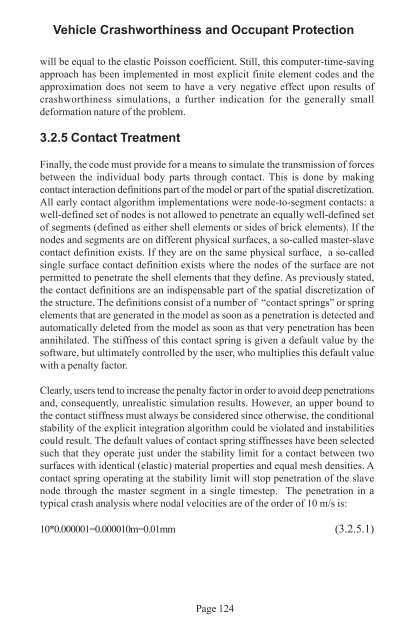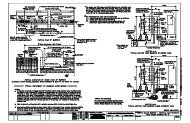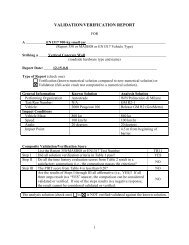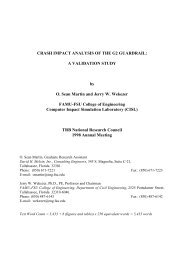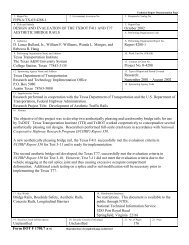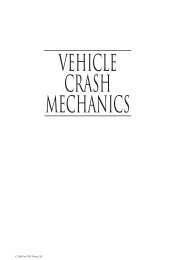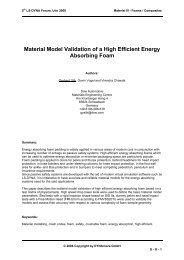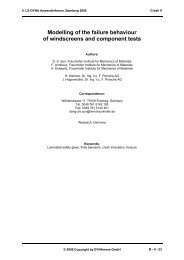Vehicle Crashworthiness and Occupant Protection - Chapter 3
Vehicle Crashworthiness and Occupant Protection - Chapter 3
Vehicle Crashworthiness and Occupant Protection - Chapter 3
You also want an ePaper? Increase the reach of your titles
YUMPU automatically turns print PDFs into web optimized ePapers that Google loves.
<strong>Vehicle</strong> <strong>Crashworthiness</strong> <strong>and</strong> <strong>Occupant</strong> <strong>Protection</strong><br />
will be equal to the elastic Poisson coefficient. Still, this computer-time-saving<br />
approach has been implemented in most explicit finite element codes <strong>and</strong> the<br />
approximation does not seem to have a very negative effect upon results of<br />
crashworthiness simulations, a further indication for the generally small<br />
deformation nature of the problem.<br />
3.2.5 Contact Treatment<br />
Finally, the code must provide for a means to simulate the transmission of forces<br />
between the individual body parts through contact. This is done by making<br />
contact interaction definitions part of the model or part of the spatial discretization.<br />
All early contact algorithm implementations were node-to-segment contacts: a<br />
well-defined set of nodes is not allowed to penetrate an equally well-defined set<br />
of segments (defined as either shell elements or sides of brick elements). If the<br />
nodes <strong>and</strong> segments are on different physical surfaces, a so-called master-slave<br />
contact definition exists. If they are on the same physical surface, a so-called<br />
single surface contact definition exists where the nodes of the surface are not<br />
permitted to penetrate the shell elements that they define. As previously stated,<br />
the contact definitions are an indispensable part of the spatial discretization of<br />
the structure. The definitions consist of a number of “contact springs” or spring<br />
elements that are generated in the model as soon as a penetration is detected <strong>and</strong><br />
automatically deleted from the model as soon as that very penetration has been<br />
annihilated. The stiffness of this contact spring is given a default value by the<br />
software, but ultimately controlled by the user, who multiplies this default value<br />
with a penalty factor.<br />
Clearly, users tend to increase the penalty factor in order to avoid deep penetrations<br />
<strong>and</strong>, consequently, unrealistic simulation results. However, an upper bound to<br />
the contact stiffness must always be considered since otherwise, the conditional<br />
stability of the explicit integration algorithm could be violated <strong>and</strong> instabilities<br />
could result. The default values of contact spring stiffnesses have been selected<br />
such that they operate just under the stability limit for a contact between two<br />
surfaces with identical (elastic) material properties <strong>and</strong> equal mesh densities. A<br />
contact spring operating at the stability limit will stop penetration of the slave<br />
node through the master segment in a single timestep. The penetration in a<br />
typical crash analysis where nodal velocities are of the order of 10 m/s is:<br />
10*0.000001=0.000010m=0.01mm (3.2.5.1)<br />
Page 124


